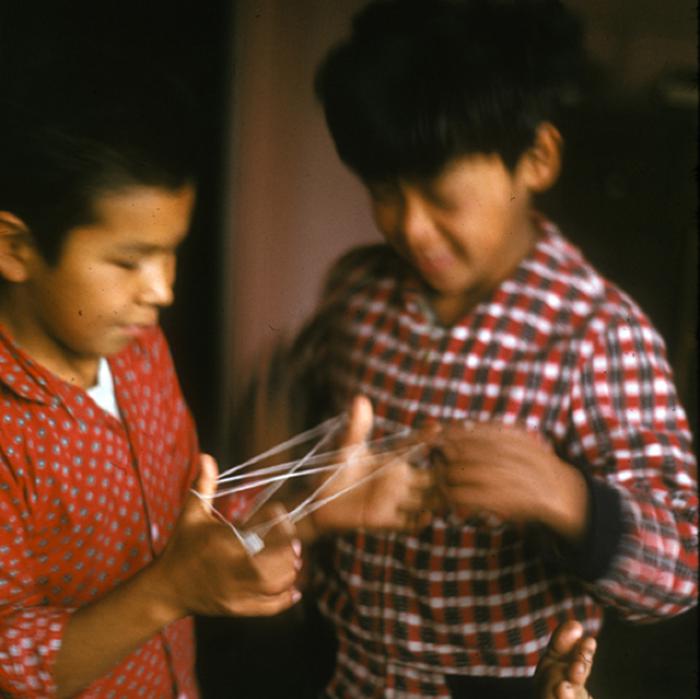String, Twine — IRafkuruaq, IRafkungcuk, WiRufkuruaq

String games like cats cradle are a popular pastime around the globe. From Australia to Asia, Africa, North America, and the high Arctic, people have long used a simple loop of string and their fingers to make designs. The function of these figures varies by culture. In some societies, string figures are considered a form of art, in others, they help storytellers share tales or teach lessons, and in others, they are thought to have magical powers: the ability to aid a hunter or ensure a plentiful harvest. The Inuit people of the Canadian Arctic made many complex string figures, weaving animals like whales, foxes, swans, and hares with string, particularly during the dark days of winter.
Alutiiq Elders recall making string figures and playing string games as children. In August, girls sang songs and wove string figures to tangle the legs of the sun and slow its departure for the winter. Boys were not allowed to play this game for fear that their fingers would get tangled in their bowstrings while hunting. In spring, children played the sunrise game, using a long length of string, a bead, and a small stick. They tied the string to a nail in a wall, threaded a bead onto the string, and then tied a small stick at the bottom of the string to keep the bead from slipping off. Then, holding the string taut, they jerked it to make the bead run up. This trick, which required lots of practice, was said to hasten the return of the sun.
